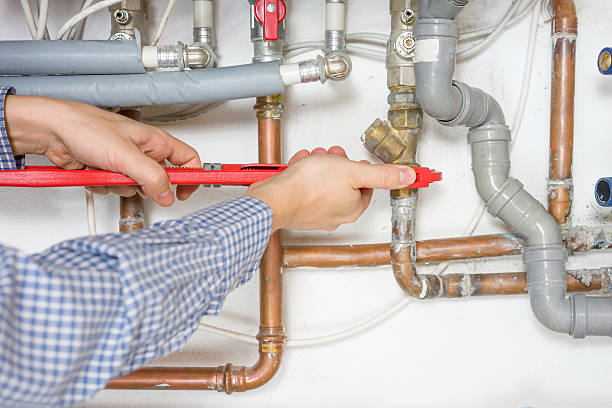Water heaters are essential for comfort and convenience in homes, providing hot water for showers, washing dishes, and more. However, many homeowners overlook the importance of regular water heater maintenance, which can significantly extend the unit’s life and improve its efficiency. By implementing just a few simple maintenance routines, you can ensure your water heater operates effectively for years to come. In this blog post, we’ll share five handy tips to help you extend the life of your water heater.
Page Contents
Regularly Check the Pressure Relief Valve
A crucial step in water heater maintenance is examining the pressure relief valve, a key feature designed to avert tank over-pressurization and possible rupture. Annually testing this valve is simple yet vital. Gently lift the lever to release water—if the water doesn’t exit when you engage the lever or continues to leak post-test, this could signal the need for a valve replacement. Ensuring its proper function not only safeguards against potential hazards but also aids in maintaining the integrity of your water heater. This routine check is a straightforward process that plays a significant role in the overall upkeep of your unit, keeping it safe and operational.
Flush the Tank to Remove Sediment
Sediment accumulation is a common issue that can hamper the efficiency and longevity of your water heater. This buildup, primarily consisting of minerals like calcium and magnesium, settles at the bottom of the tank, potentially leading to corrosion and diminished heating performance. Conducting an annual tank flush is an effective countermeasure. Begin this process by disconnecting the power supply to ensure safety. Then, halt the cold water inlet to the tank. Connect a garden hose to the drainage valve, positioning the hose’s end in an area that can safely manage the discharge of hot water. Open the drain valve to commence the flushing, allowing the tank to empty completely. This action effectively clears out any sediment buildup. Once the tank is emptied, shut the drain valve, reconnect the water supply, and restore power to the unit. This maintenance task not only helps in preventing corrosion but also enhances the unit’s operational efficiency.
Inspect the Anode Rod and Replace if Necessary
The anode rod, a crucial component in your water heater, acts as a sacrificial element, attracting corrosive substances and thereby preventing tank rust. Over time, this rod deteriorates due to its protective role. It’s essential to examine the anode rod every two years to ensure it’s effectively safeguarding the tank walls. When inspecting, if you notice significant wear or if a considerable length of the core wire is exposed—typically more than 6 inches—it’s time for a replacement. Similarly, a heavy calcium deposit on the rod is a clear indicator that it no longer offers adequate protection. Replacing the anode rod involves loosening it with a socket wrench and installing a new one. This proactive measure not only preserves the tank’s integrity but also contributes to the longevity and efficiency of your water heater, protecting your investment from premature failure due to internal corrosion.
Also Read=5 Telltale Signs of Leaky Pipes You Shouldn’t Ignore
Adjust the Temperature Setting for Efficiency and Safety
Adjusting the temperature of your water heater is a simple yet effective step towards both energy conservation and safety. Often, these units are preset at a factory setting that is higher than necessary for typical home use. By lowering the temperature to about 120 degrees Fahrenheit, you not only minimize the risk of accidentally scalding yourself or a family member but also contribute to reducing your household’s energy consumption. This adjustment not only aids in lowering your utility bills but also decreases the rate of sediment accumulation and corrosion within the tank. Making this change is generally an easy task: locate the thermostat on your unit and adjust the dial to the recommended setting. This minor modification can have a notable impact on the overall efficiency and longevity of your water heater, as well as offer a safer hot water environment for your home.
Inspect for Leaks and Corrosion Regularly
Maintaining vigilance for any signs of leaks or corrosion is an essential component of water heater upkeep. Periodically, it’s wise to conduct a thorough examination of both the water heater tank and the associated piping. Look closely for any moisture or wet spots that could indicate a leak, as well as any rust or discoloration that might suggest corrosion. These indicators can be subtle but are often precursors to more significant issues. Addressing these concerns promptly can prevent them from escalating into major, costly repairs. This process not only helps in safeguarding your home against water damage but also in preserving the functionality and efficiency of your water heater. Through these regular checks, you’re taking proactive steps to ensure the longevity of your water heater, while also maintaining its safety and reliability. If you need a professional for Indianapolis water heaters, check out Coopers.

Lois Lane is a professional blogger and a seasoned Content writer for wellhousekeeping.com. With a passion for simplifying complex Home Decor topics, he provides valuable insights to a diverse online audience. With four years of experience, Lois has polished his skills as a professional blogger.




